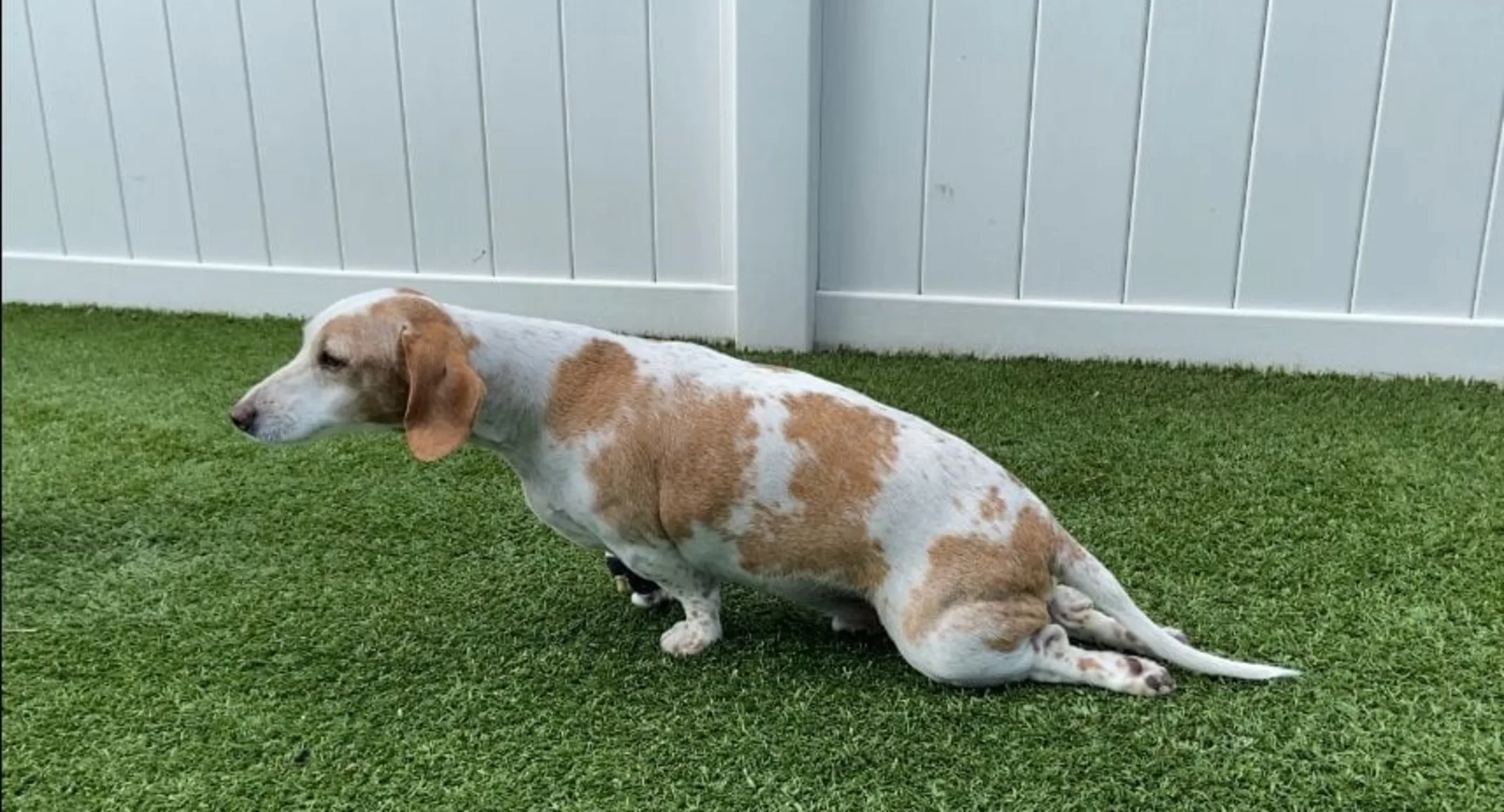Intervertebral Disc Disease (IVDD)
July 2, 2025 · Veterinary Services

Intervertebral Disc Disease (IVDD) is a common condition that is frequently treated by our skilled Neurology team at Red Bank Veterinary Hospital Mount Laurel.
What is Intervertebral Disc Disease (IVDD)?
IVDD is a degenerative disease that can affect your dog’s spinal cord and causes a range of painful mobility issues. The spinal cord runs from the brain down through the vertebral canal in the vertebrae. Between these vertebrae in the neck, back, and tail region, there are intervertebral discs that cushion the vertebrae. These discs have an outer fibrous layer and an inner gelatinous core. They act as shock absorbers for the spine. As pets age, the inner portion of these discs loses water content and becomes mineralized, causing the outer layer to weaken. This can result in the disc bulging or herniating, sometimes fully.
Common Breeds Affected
IVDD is often seen in breeds with long bodies and short legs, including:
French bulldogs
Dachshunds
Beagles
Pekingese
Shih Tzu’s
Basset hounds
Larger breeds can also be affected by IVDD.
Symptoms of IVDD
Signs of a disc bulge or herniation can include:
Pain
Difficulty jumping
Lameness
Weakness
Incoordination
Hunched back
Reluctance to move the head or neck
Fecal or urinary incontinence
The severity of the symptoms depends on the location and extent of the herniation.
What Causes IVDD in dogs?
Intervertebral Disc Disease is an age-related or genetic, degenerative process that affects the spinal cord of a dog over a period of time, often going undetected. Something simple like rough play, walking up stairs or jumping on to the couch could damage a disc that has been weakened by IVDD and trigger painful symptoms of the disease.
IVDD occurs intervertebral discs, which act as cushions between the vertebrae, degenerate, bulge, or herniate, putting pressure on the spinal cord and often damaging the dog’s nerve impulses such as those that control bladder and bowel control.
Diagnosis & Treatment
For a definitive diagnosis, an MRI is the most effective method for imaging the spine. In some cases, IVDD can be managed with medications such as anti-inflammatories, pain relievers, and muscle relaxers. Strict rest and confinement are also essential for recovery. For pets with cervical IVDD, elevating food and water bowls and using a harness can help.
However, when medical management does not provide relief, or when the pet shows worsening incoordination, weakness, or is unable to stand or walk, surgery becomes necessary. The goal of surgery is to relieve spinal cord compression and restore function. Prognosis is generally positive if the pet still has feeling in their limbs after surgery. If a pet loses sensation in their limbs, the prognosis can be guarded or poor.
At Red Bank Veterinary Hospital Mount Laurel, our Neurology team consists of skilled technicians and a board-certified veterinary neurologist who are dedicated to providing the best care for your pet. We are here to support both you and your pet every step of the way.
